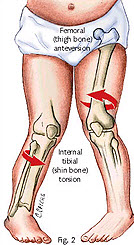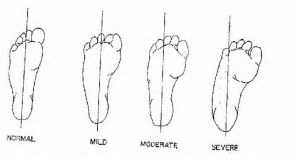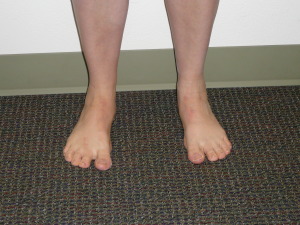In-toe walking
In-toe walking in children.
So your child is walking with their foot pigeon toe or in-toe walking. They may be tripping over their own feet. You may think they are just a little klutzy. however it may be something more significant. In-toe gait or Intoe walking can stem from a few different areas. You need an expert in pediatric and childrens gait to analyze this issue to treat properly. When i performed my fellowship at the International Center For limb Lengthening under the guidance of Dr Dror Paley and Dr John Herzenberg, I had the opportunity to evaluate hundreds of children and adults with torsional issues that led to intoe and pigeon toe gait. it is vital to perform a thorough gait (walking exam) . I use a special video program for gait analysis that allows for instant review with slow motion viewing. There are times that an x ray can be helpful to measure angles of torsion. However the most important part of the exam is the physical exam and performing range of motion exams.
The issue that needs to be decided is whether the torsional deformity causing the in toeing is a bone deformity or a soft tissue / muscular tendon tightness. Then the next part is to decide if the problem is stemming from the Hip or the femur or the tibia or the foot. Or maybe a combination of more than one . There are multiple reasons for intoe walking in future posts i will discuss some of the diagnosis and treatments. Such as Femoral torsion and Femoral Anteversion. There is also Tibial torsion and internal tibial torsion. As well as metatarsus adductus , and even improperly casted clubfeet can leave some with intoe gait. I have seen many Ponseti casted clubfeet with residual metatarsal adductus.
We will get into each topic over the next few weeks.




